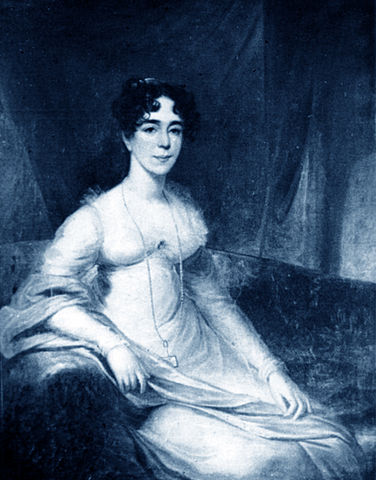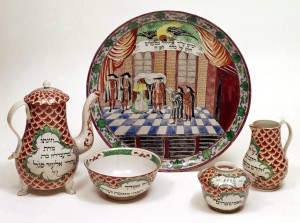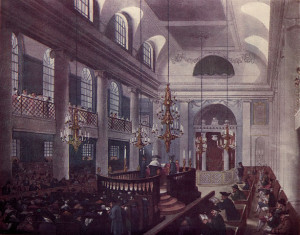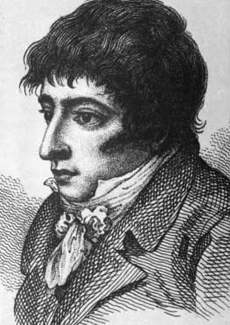As you may have noticed, I love sharing plot bunnies, or ideas for novels I get while researching. These are books I really really want to read but am not going to write.
This month, I’ve come up with a Jewish-themed list of awesome Regency romance scenarios, since the dearth of Jewish historical romance became pretty obvious when people started asking for recommendations after the whole For Such a Time imbroglio. (To find the books that do exist, try this Goodreads list and the #jhrom hashtag on Twitter.)
You may notice that very few of my bunnies involve the Upper Ten Thousand. There were a number of Jews socializing with dukes during the Regency (you can read a bit about that in this blog post I did at AAR), but that just isn’t my personal jam.
1. There was at least one Jewish (or part-Jewish) bodysnatching gang in London during the Regency, led by Israel Chapman. I really wanted to learn more about this since my own hero from True Pretenses, Asher Cohen, was part of a Jewish bodysnatching gang as a child. (His fictional boss’s name, Izzy Jacobs, is an homage to Chapman.) Googling turned up…an article titled “Israel Chapman: Australia’s first police detective.”
Australia…I said to myself. If you were convicted of bodysnatching, you might end up transported to Australia. What if it’s the same guy?
And it is!!!
You can read more about Israel Chapman’s career in Australia on the Australian Police Website and the Australian Dictionary of Biography. At first I was concerned it was two men sharing the same name, because the ADB article says “He followed the occupation of coachman. At the Middlesex gaol delivery on 14 January 1818 he was found guilty of highway robbery and sentenced to transportation for life.”
But then I found this on About 1816:
“Chapman himself in a later trial claimed that his gang stole 50 bodies a week, although this may have been bravado. He once told a judge, should the judge die before him, Chapman would be ‘after him’. The law caught up with him on 14 January 1818, when he made the mistake of attacking property. He was transported for Highway, rather than graveside, robbery.”
It’s totally the same guy!
(It wasn’t unusual for bodysnatchers to also pursue other kinds of crime during slow weeks. There were just only so many dead bodies even in London. I’ve got an inquiry in to Mr. About 1816 and I’m hoping he can share his sources with me. I did find Chapman’s trial record—search the page for “Israel” to find the right record. He gave his age as 24.)
As a detective, Israel Chapman was a master of disguise and may have had a photographic memory for faces! I really, really want a series of romantic mysteries based on this guy.
2. As soon as I read this paragraph from Jews of Georgian England, I knew there was a novel in it:
“Because of the opposition of the great London merchants, the number of licensed Jewish brokers [i.e. those allowed to trade on the London Stock Exchange] continued to be limited to twelve until 1830. Whenever one of the twelve Jewish brokers died or resigned, there was intense competition to obtain the vacated position. This allowed the Lord Mayor, who had the right to nominate a successor, to exact a substantial fee from whomever he nominated. In 1815, for example, Moses Montefiore’s uncle paid £1,200 to obtain a broker’s medal for him.”
(Although I’ve read there were many unlicensed brokers trading in London as well.)
Think of it: one of the licensed brokers is about to retire or dies unexpectedly! Shenanigans ensue! This could be a dark, gritty story about the financial underbelly of London, or an almost Wodehousian romp depending on your preference.

Judith Montefiore, Moses Montefiore’s wife. She kept diaries, some of which survive, including the first six months of her marriage in 1812. In 1846 she published the first Jewish cookbook in English. Image via Wikimedia Commons.
3. Brighton was very popular with Jews during the Regency, in part because of its nearness to London. For example, City businessmen often went down on weekends (this is hard for me to imagine, because it’s a 50 mile journey, but my source is very clear on the point!).
As one anti-Semite put it in 1819: “What a multitude of people we have here, Jews, haberdashers, and money-lenders without number, a sort of Marine Cheapside, Mr. Solomons, Mrs. Levis, and all the Miss Abrahams; in short, Hook Noses, Mosaical Whiskers, and the whole tribe of Benjamin occupy every shop, every donkey-cart, and every seat in Box, Pit, and Gallery.”
I don’t actually have a plot for this one but I love Brighton books and would love to see one with Jewish protagonists! Ditto Bath.

Staffordshire coffee service, given as a wedding gift, 1769. Image via the Jewish Museum.
4. In theory, British courts were Anglican, and the Marriage Act of 1753 states that “nothing in this Act contained shall extend to…any Marriages amongst the People called Quakers, or amongst the Persons professing the Jewish Religion, where both the Parties to any such Marriage shall be of the People called Quakers, or Persons professing the Jewish Religion respectively…”
However, Endelman says, “Even in marriage cases it was not unknown for well-to-do Jews to have recourse to non-Jewish courts. In two well-known cases of the 1790s…a young man secretly married, according to Jewish ritual, the sixteen-year-old daughter of a wealthy Jewish merchant [and] the irate fathers sought to have the marriages annulled in the Consistory Court of London, a quasi-ecclesiastical court. In both cases, the fathers argued that the marriages were invalid according to Jewish law; the judge, in turn, decided the cases according to Jewish law as it was expounded to him by several expert witnesses.”
There are so many potential protagonists and plots here! I think my favorite involves an attractive relative of one of the young lovers attempting to seduce one of the expert witnesses and sway his testimony.
5. On the party holiday of Purim, the complete Book of Esther is read aloud in synagogue. It’s traditional for children (and not just children) to boo, hiss, stamp, stamp their feet, and use noisemakers every time the name of the villain Haman is read, as a way of obliterating his name and memory.
But in the Regency and into the 1820s, some Jews felt that Jewish services were just not English and well-bred enough. As a result, in 1824 the New Synagogue prohibited noisemakers. In 1827 the Hambro Synagogue did the same.
(These were two off-shoots from the main Ashkenazi synagogue in London, the Great Synogogue.)
I think this would make a great holiday novella. One protagonist is an uptight Anglicizer, and the other is the single parent of an adorable child who loves making noise on Purim! Obviously Protag #1 learns a valuable lesson about the True Meaning Of Purim.
(A word on noisemakers: Endelman calls them “Haman clappers,” which to me suggests this style of noisemaker. I grew up calling them “groggers”, and I’ve pinned some antique groggers of the kind most familiar to me here. A 1738 account of Jewish customs published in London uses the word “hammers”—and this 1724 German engraving shows children holding what look a lot like small hammers. I also found two Victorian references to children being given “little wooden hammers” on Purim.)

Rowlandson and Pugin, The Great Synagogue, 1809. Image via Wikimedia Commons.
The Great Synagogue was in continuous use until 1941, when it was destroyed in an air raid. Bevis Marks, the chief Sephardic synagogue, is still in use today in its lovely Georgian building. Definitely somewhere I’ll visit next time I’m in London!
6. Jews made up a good chunk of Regency boxers. The most famous is Daniel Mendoza, who revolutionized the sport with his “scientific style”. (As Wikipedia notes, “Before Mendoza, boxers generally stood still and merely swapped punches.”)
(A note on “Gentleman” Jackson, by the way, because I’ve got a grudge—he only fought three public matches, one of which he lost. But in 1795, he beat Mendoza by getting his hand into Mendoza’s long hair and hammering his face, and became Heavyweight Champion of England. According to Mendoza, Jackson refused a rematch unless he was paid 500 guineas! He promptly retired, opening the fashionable boxing school in Bond Street mentioned in so many romances.
Mendoza also ran a boxing school at least from 1787 to 1801, and possibly longer—maybe when I read his Memoirs I can nail down an end date—but it was in the City of London, a section of town with more Jews, and while well-known and popular at the time, somehow failed to be as well-remembered.)

Daniel Mendoza, probably from a contemporary illustration. What a babe! Image via Wikimedia Commons.
Anyway. In September of 1809, the Theatre Royal in Covent Garden reopened after fire repairs, with higher ticket prices and fewer cheap seats. Audiences protested, and management brought in a retired Mendoza and Dutch Sam as well as other Jewish boxers and fighting types to keep order and essentially serve as bouncers. This lasted for a week or two, during which there was pandemonium and constant fighting in the theater. Management, defeated, fired Mendoza and his friends (and eventually lowered ticket prices). The incident became known as the “Old Price Riots.”
I think this would be a great setting for a romance! You’ve got your Jewish pugilist bouncer, and the other protagonist could be almost anyone: an orange-seller, an upper-class theater patron (even a duke!), an actor or actress, one of the theater managers…
7. Speaking of Jewish boxers, “In 1795 a boxing magazine reported a well-fought match in a field near the New Road in London between Mary Anne Fielding and ‘a noted Jewess of Wentworth Road’ who was seconded by Daniel Mendoza. Fielding knocked the Jewess down over seventy times, with the fight lasting an hour and twenty minutes.” So you can have a Jewish boxer heroine, too!
8. This one is tragic. In Lisbon in 1725, a canon law student named Luis began courting his young neighbor Brites (he was 35, she was 19, by the way). She liked him, but her family were secretly observant Jews who had been forced to convert to and publicly practice Catholicism by the Spanish Inquisition. Luis volunteered to become a Jew to marry her and was initiated into her family’s hidden community. The couple even talked of moving to Holland together, where they could be open about their Judaism. But when the relationship soured, Luis went straight to the Inquisition and denounced Brites and her entire family, who were arrested.
Brites made a full confession (including confirming many members of her family as secret Jews—if you didn’t do this, you would be convicted and executed) and was released within five months. During her brother’s trial—he was eventually burned at the stake in 1729—the Inquisitors summoned her to testify—but she had moved to England.
What happened to her in England? Did she make a new family for herself, and learn to forgive herself and to love and trust again? I hope so, and I’d love to read about it.
9. And I close with another bodysnatching scenario: Jewish bodies were very in demand by bodysnatchers, because Jews bury within twenty-four hours of death (i.e. the bodies are fresher). So synagogues with cemeteries had to take extra precautions to guard them. Cecil Roth writes, in his History of the Great Synagogue, writes:
“A sort of wheeled sentry box was provided, which was moved about the ground and placed near newly-made graves, which were watched from it so long as was necessary. At the Great Synagogue, a law was passed to the effect that all members of the congregation between the ages of eighteen and seventy were to be obliged to lend their services in rotation. Each night, therefore, three of them, armed with blunderbusses, performed this cold and rather gruesome duty, from as early as four o’clock on winter evenings to seven in the morning…It was possible to obtain exemption only on the payment of a substantial fine…This system continued to obtain until well on in the nineteenth century.” [Read more]
This situation is ripe for a romance! (Okay, maybe “ripe” isn’t the word I wanted to use there…) Protagonist possibilities: cemetary guards, rich members who want to get out of guard duty, the attractive relative/heir of a newly buried person, bodysnatchers, doctors, medical students, the person in charge of organizing the guard rota…
Make it happen, folks.

This is so much my cup of tea. Did you know that Mendoza was an ancestor of the late Peter Sellers, who apparently looked very like him? and in one of the Pink Panther movies there are prints of Mendoza on the wall?
Also a shout out for Nita Abrams’ wonderful Courier Series about a spy/financier family in London during the Napoleonic wars (self pub these, Ms. Abrams! Please!).
Ooh, I did know Sellers was a descendant but I didn’t know it was referenced in a Pink Panther movie! That’s so cool! If I were related to Mendoza I’d never talk about anything else, so good on him for keeping it to one small reference. 🙂
Yes, I love Nita Abrams! Do you know if she has the rights back, though?
I love these historical tidbits. Thank you! And I cherish my Nita Abrams and wish she could publish more books!
I love explorations of history’s undusted corners and unsorted closets. You don’t have to be looking for a plot bunny to find this an amazing post.
Yay! Thank you. Although actually, there’s a ton of information out there on this topic! You just have to be looking for it.
I love this list. I wish I wrote historical romances. But I will, like you, wait until these books are written. A non-regency historical is “Henna House” about Yemminte Jews in WWII. It’s not strictly romance, but an amazing book.
Ooh, thanks for the rec! If anyone is curious, here’s the link:
http://www.amazon.com/Henna-House-Novel-Nomi-Eve/dp/1476740275
Fabulous stuff! I love the Purim one because part of the Purim tradition is to drink liquor until you “cannot tell the difference between ‘Blessed be Mordecai’ and ‘Cursed be Haman!'” (Honest, it’s in the Talmud). I can see a plot where two protagonists meet (maybe as she’s leaving the women’s balcony since women were required to hear the Megillah being read), there’s alcohol involved and hijinks ensue. Hmmmmm….I may be offline for a while, writing.[g] Thanks again for the research and for sharing!
Ooh, that’s a really cute idea! I love it! Do you think they would have been drinking AT shul? Maybe! I did find out that Purim plays were already a thing:
https://pbs.twimg.com/media/CNNMKqBUEAEjONV.png:large
The men would be drinking at shul, the women maybe not, but I can see a bold lady or two slipping a flask of brandy or slivovitz into her reticule.[g] Also, the idea of masquerading on Purim lends itself to many hijinks with masks, costumes and more.
Oh, and one more cautionary tale: I got engaged on Purim. There was alcohol involved. The next day I looked at my husband-to-be and said, “We agreed to do _what_ last night in front of 200 of our friends? And you called my father???” The good news is, decades later we’re still together, but as I told my sons, “Friends don’t let friends drink and propose on Purim.”
[…] Today at Risky Regencies, I’ve come up with a Jewish-themed list of awesome Regency romance scenarios, since the dearth of Jewish historical romance became pretty obvious when people started asking for recommendations after the whole For Such a Time imbroglio. I’d love to read ALL of these ideas. Bodysnatchers, boxers, and Brighton, oh my! […]
Rose, what a great post! I love these kinds of research tidbits. And I admire you for holding onto these plot bunnies long enough to share them –the ones that cross my mind when I’m researching usually hop away too fast to be captured. 🙂 But I’m liking the idea of adding a Jewish pugilist to the cast of characters in the series I’m working on (sporadically, I admit). I have considered writing a Romance with a Jewish heroine, but while I admire the culture, I am not Jewish, and think I couldn’t do such a story well. I’d love to read some of these if someone wrote them!
Thanks, Gail! I’m glad you enjoyed it. 🙂
These are really cool ideas, Rose! I don’t feel I’m the right person to work on them either, but I know it would be good to see more romance with people of different faiths.
Speaking of the Montefiore family, Sarah Montefiore (born 1763 to David and Leah Montefiore in Whitechapel, London) married George Mitchell (born 1750 at the manse in Kinnellar, Scotland) at St. George’s, Hanover Square in 1784, after which they emigrated to the newly formed United States. They eventually settled in Mayesville, Kentucky. Any bunnies to be found there?